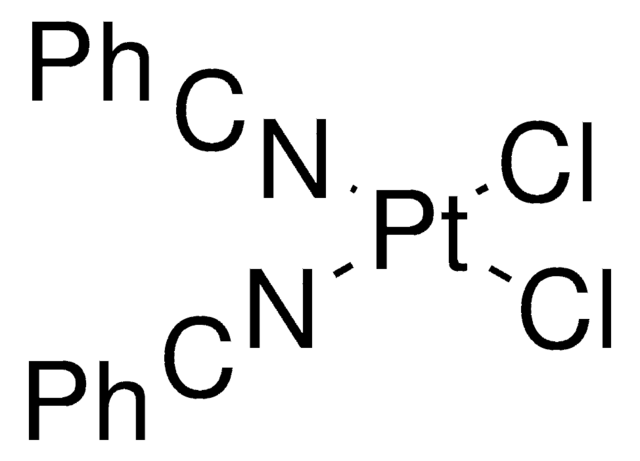P57506
Pyridine
ReagentPlus®, ≥99%
About This Item
Produits recommandés
Densité de vapeur
2.72 (vs air)
Niveau de qualité
Pression de vapeur
10 mmHg ( 13.2 °C)
20 mmHg ( 25 °C)
Gamme de produits
ReagentPlus®
Pureté
≥99%
Forme
liquid
Température d'inflammation spontanée
899 °F
Limite d'explosivité
12.4 %
Impuretés
≤0.1% water (Karl Fischer)
Indice de réfraction
n20/D 1.509 (lit.)
pH
8.5 (25 °C, 15.82 g/L)
Point d'ébullition
115 °C (lit.)
Pf
−42 °C (lit.)
Densité
0.978 g/mL at 25 °C (lit.)
Chaîne SMILES
C1=CN=CC=C1
InChI
1S/C5H5N/c1-2-4-6-5-3-1/h1-5H
Clé InChI
JUJWROOIHBZHMG-UHFFFAOYSA-N
Vous recherchez des produits similaires ? Visite Guide de comparaison des produits
Description générale
Application
- To synthesize glycophospholipids and phosphate diesters or phosphonate monoesters in the presence of trichloroacetonitrile as an activating reagent.
- In Knoevenagel condensation reactions.
- In the TEMPO-mediated radical polymerization of 3-vinylpyridine.
Informations légales
Mention d'avertissement
Danger
Mentions de danger
Classification des risques
Acute Tox. 4 Dermal - Acute Tox. 4 Inhalation - Acute Tox. 4 Oral - Eye Irrit. 2 - Flam. Liq. 2 - Skin Irrit. 2
Code de la classe de stockage
3 - Flammable liquids
Classe de danger pour l'eau (WGK)
WGK 2
Point d'éclair (°F)
68.0 °F - closed cup
Point d'éclair (°C)
20 °C - closed cup
Certificats d'analyse (COA)
Recherchez un Certificats d'analyse (COA) en saisissant le numéro de lot du produit. Les numéros de lot figurent sur l'étiquette du produit après les mots "Lot" ou "Batch".
Déjà en possession de ce produit ?
Retrouvez la documentation relative aux produits que vous avez récemment achetés dans la Bibliothèque de documents.
Les clients ont également consulté
Notre équipe de scientifiques dispose d'une expérience dans tous les secteurs de la recherche, notamment en sciences de la vie, science des matériaux, synthèse chimique, chromatographie, analyse et dans de nombreux autres domaines..
Contacter notre Service technique










